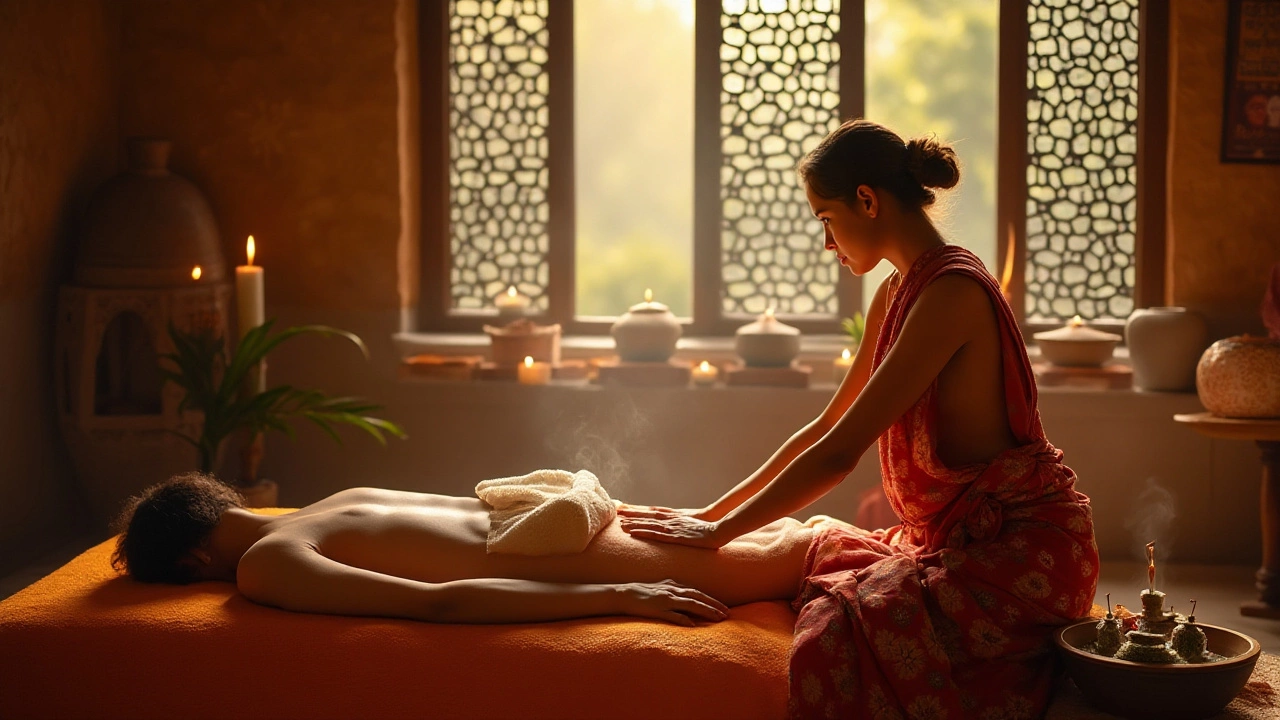Ayurvedic Massage: Benefits, Techniques, and What You Need to Know
When you think of Ayurvedic massage, a traditional Indian bodywork system that uses warm herbal oils and rhythmic strokes to balance the body’s energy. Also known as Abhyanga, it’s not just a spa treat—it’s a daily ritual for millions in India, designed to release toxins, calm the mind, and restore harmony between body and mind. Unlike Swedish or deep tissue massage, Ayurvedic massage doesn’t follow a one-size-fits-all approach. It’s tailored to your unique constitution, or dosha, the biological energy pattern in Ayurveda that determines physical and mental traits—Vata, Pitta, or Kapha. If you’re Vata-dominant, you’ll get slower, grounding strokes with sesame oil. Pitta types get cooler, soothing pressure with coconut oil. Kapha folks get vigorous, stimulating motions with mustard or eucalyptus blends. This isn’t guesswork—it’s ancient science.
The oils used in Ayurvedic massage aren’t just carriers—they’re medicine. Herbs like ashwagandha, turmeric, and neem are infused into sesame, coconut, or almond oil to target specific imbalances. These aren’t aromatherapy scents; they’re bioactive compounds absorbed through the skin to reduce inflammation, improve circulation, and support digestion. Studies from Indian medical journals show regular Abhyanga can lower cortisol levels and improve sleep quality—especially for people with chronic stress or joint pain. And it’s not just for adults. In Tamil Nadu and Kerala, babies get daily Ayurvedic massages from birth, not because it’s tradition, but because it’s proven to strengthen muscles and boost immunity.
But here’s the catch: not all "Ayurvedic" massages are real. Many spas slap on the label and use regular coconut oil with lavender. True Ayurvedic massage requires trained practitioners who know your dosha, use freshly prepared herbal oils, and follow specific stroke patterns that move energy from extremities toward the heart. It’s not about luxury—it’s about alignment. If you’ve tried massage before and felt temporary relief at best, you might have missed the Ayurvedic difference. The real effect builds over time: better digestion, fewer headaches, deeper sleep, and a quiet mind.
What you’ll find in the posts below are clear, no-fluff explanations of how Ayurvedic massage works, what to expect during a session, which oils actually help, and the hidden risks you might not know about. Some posts break down the science behind herbal oils. Others compare it to other bodywork traditions. One even warns about heavy metals in cheap Ayurvedic products. This isn’t a list of spa deals—it’s a guide to doing it right.
